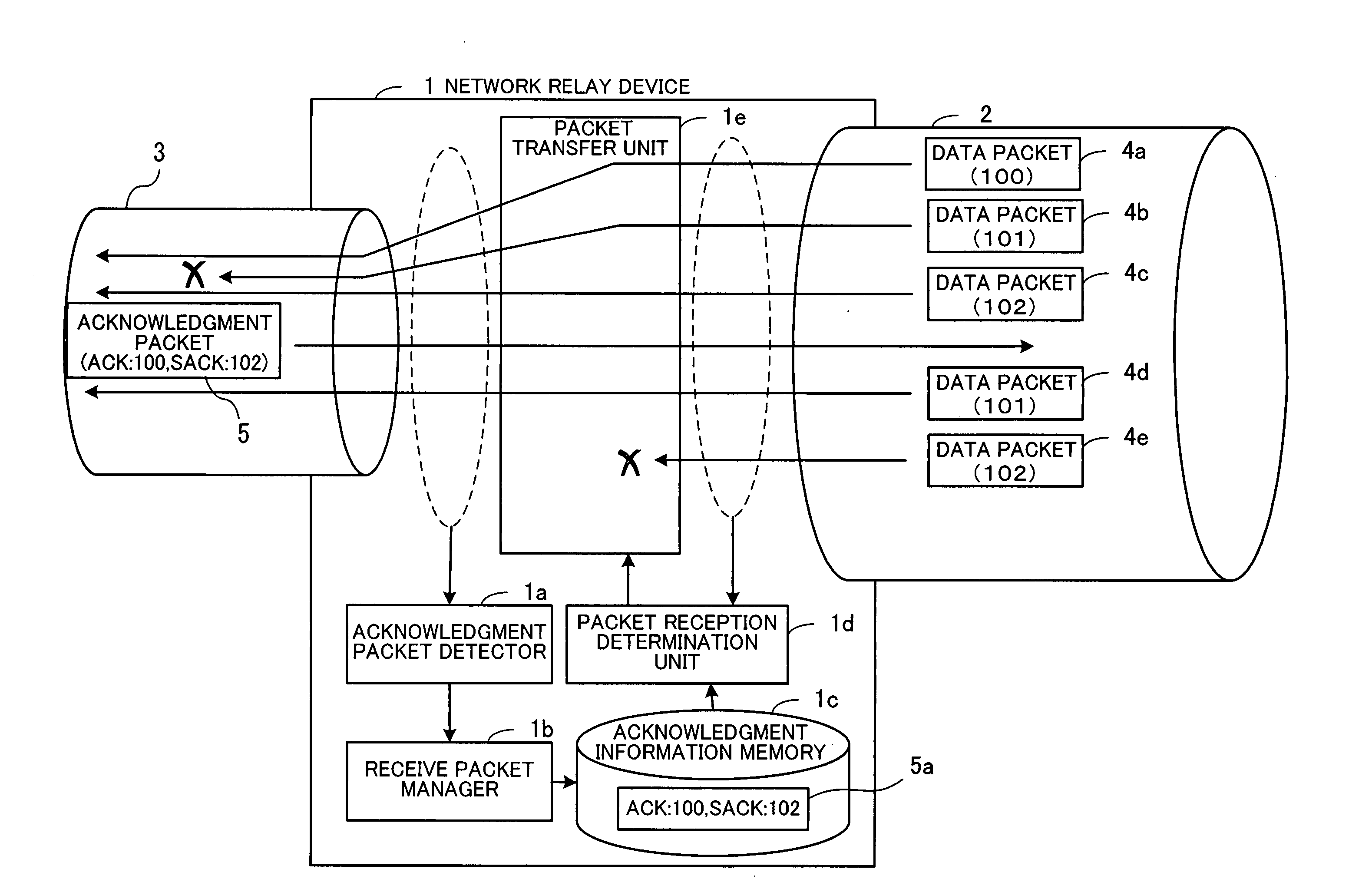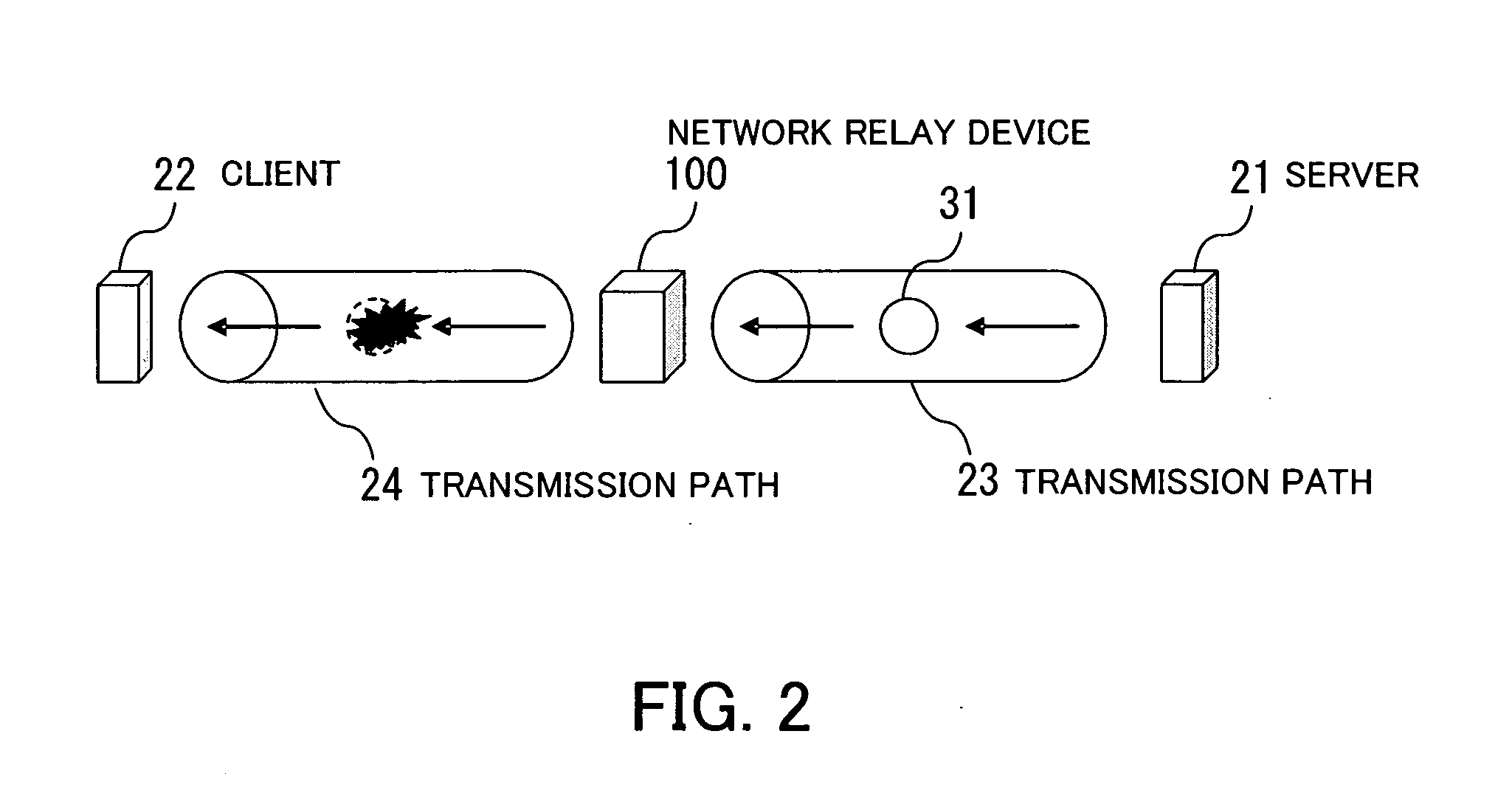Congestion control network relay device and method
a network relay and congestion control technology, applied in data switching networks, frequency-division multiplexes, instruments, etc., can solve the problems of unavoidable high-priority packet congestion, difficult to carry on effective communication, and liable to occur congestion
- Summary
- Abstract
- Description
- Claims
- Application Information
AI Technical Summary
Benefits of technology
Problems solved by technology
Method used
Image
Examples
Embodiment Construction
[0057] Preferred embodiments of the present invention will be described below with reference to the accompanying drawings.
[0058]FIG. 1 schematically illustrates an embodiment of the present invention. A congestion control network relay device 1 is adapted to relay data between transmission paths 2 and 3. In the example shown in FIG. 1, it is assumed that the transmission speed of the transmission path 3 is lower than that of the transmission path 2, and also that the network relay device 1 is connected to a transmitting-side device via the transmission path 2, as well as to a receiving-side device via the transmission path 3. The congestion control network relay device 1 comprises an acknowledgment packet detector 1a, a receive packet manager 1b, an acknowledgment information memory 1c, a packet reception determination unit 1d, and a packet transfer unit 1e.
[0059] The acknowledgment packet detector 1a detects, from among packets transferred through the transmission paths 2 and 3, ...
PUM
 Login to View More
Login to View More Abstract
Description
Claims
Application Information
 Login to View More
Login to View More - R&D
- Intellectual Property
- Life Sciences
- Materials
- Tech Scout
- Unparalleled Data Quality
- Higher Quality Content
- 60% Fewer Hallucinations
Browse by: Latest US Patents, China's latest patents, Technical Efficacy Thesaurus, Application Domain, Technology Topic, Popular Technical Reports.
© 2025 PatSnap. All rights reserved.Legal|Privacy policy|Modern Slavery Act Transparency Statement|Sitemap|About US| Contact US: help@patsnap.com



